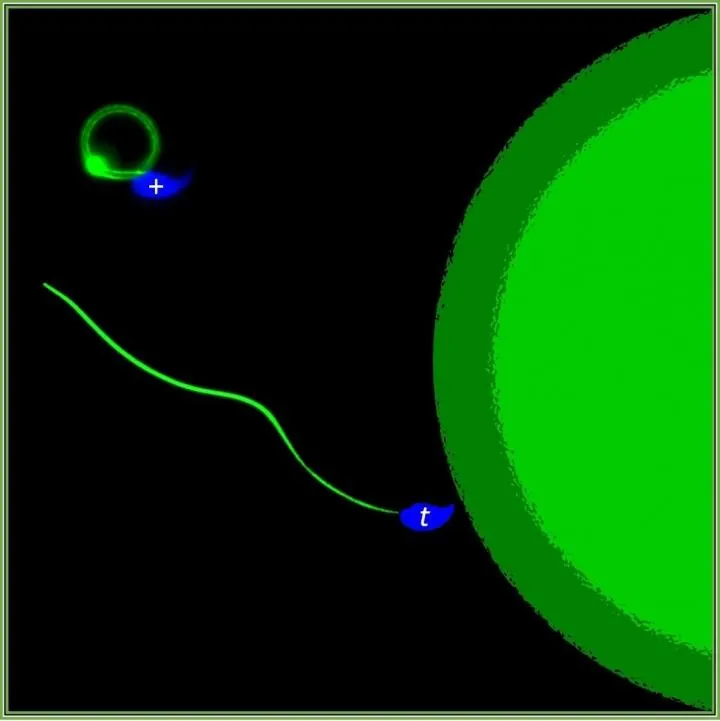What makes some mice sperm so much more successful than others? Probably not a question you’ve asked before, but it’s one that’s been answered by researchers at the Max Planck Institute for Molecular Genetics (MPIMG) in Berlin.
When a male mouse carries a genetic variant called ‘t-haplotype’, it has a 99 per cent chance of passing it onto its offspring. The researchers found that the sperm carrying this variant give themselves an edge by poisoning their competitors.
If this trait is also found in human men, the researchers say, this could explain some cases of infertility.
In humans, DNA is encoded in 46 chromosomes. Almost all human cells have all 46 chromosomes, except sperm and egg cells, which contain only 23. When a stem cell divides to form two sperm cells, each sperm cell gets half of the genetic material.This combines with 23 chromosomes in an egg cell to form an embryo with a full set of 46 chromosomes.
In mice with one copy of the t-haplotype gene variant, this means that half of the sperm receive the variant, and half of them don’t. The sperm with the variant are so successful that they fertilise the egg up to 99 per cent of the time.
The researchers have discovered that the source of this competitiveness all comes down to a protein called RAC1. RAC1 is a ‘molecular switch’, which tells cells to react to external stimuli. In particular, it controls how the cell moves; it may even help sperm cells to sniff out an egg cell.
Read more about fertility:
- Will it ever be possible for a same-sex couple to have a biological baby together?
- ‘Breakthrough in fertility’ after baby born from egg matured and frozen in lab
- Planet Earth's fertility problem
Sperm find their way around best when there is an optimal amount of RAC1. “The competitiveness of individual sperm seems to depend on an optimal level of active RAC1; both reduced or excessive RAC1 activity interferes with effective forward movement,” said Dr Alexandra Amaral of MPIMG, first author of the study.
That is, sperm cells depend on RAC1 to be able to move in a straight line. With too much or too little, sperm tend to wiggle around with no particular direction.
The t-haplotype sperm have much higher RAC1 activity than sperm without it. As a result, in mice with the t-haplotype gene variant, there are high enough levels of RAC1 to disrupt all sperm from finding their way towards the egg. However, the researchers noticed that the ones with the variant could still find their way.

“The trick is that the t-haplotype ‘poisons’ all sperm, but at the same time produces an antidote, which acts only in t-sperm and protects them,” said Prof Bernhard Herrmann, director of MPIMG. “Imagine a marathon, in which all participants get poisoned drinking water, but some runners also take an antidote.”
This also means that male mice with two copies of the t-haplotype gene variant, rather than just one, are sterile. With two copies of the variant, when the stem cell splits, all stem cells get the variant. This results in such high levels of RAC1 activity that the sperm cells can barely move at all.
“It will be interesting to see if [RAC1] also controls human sperm, and if any forms of male infertility caused by impaired sperm motility in man may be related to improper [RAC1] activity,” the researchers wrote in the paper.
Reader Q&A: Are sperm alive?
Asked by: Anonymous
Yes, it’s certainly as alive as any other cells in a male body. Since it can have a life of its own outside the body, each sperm is really an independent single-celled organism – like a living amoeba, but differing in locomotion and lifestyle.
From an evolutionary viewpoint, it’s the other cells in a male animal that are pretty much dead: only the sperm can reproduce.
Read more: